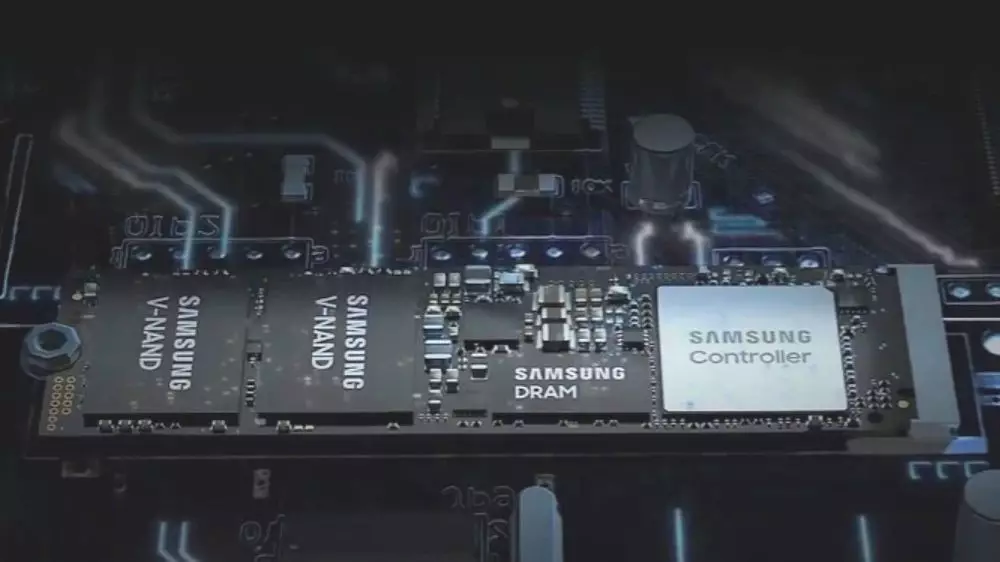The advent of PCIe 5.0 technology has introduced speeds previously unimagined in the world of consumer solid-state drives (SSDs). However, despite such potential, uptake has been moderate, particularly among PC gaming enthusiasts. The landscape may soon shift, thanks to Samsung’s recent announcements surrounding their PM9E1 SSD. As the technology firm begins mass production of this next-generation storage solution, it promises to dramatically boost performance metrics, piquing the interest of gamers and tech enthusiasts alike.
Sleek Performance Specifications
Samsung’s PM9E1 SSD boasts impressive specifications, reaching sequential read speeds up to 14.5 GB/s and write speeds of 13.5 GB/s. When compared to its PCIe 4.0 counterpart, which offers read speeds of 7 GB/s and write speeds nearing 5.1 GB/s, the enhancements signify a remarkable leap—virtually doubling performance. It’s essential to highlight that while most PCIe 5.0 SSDs available currently max out around 12 GB/s and 10 GB/s for read and write operations respectively, the PM9E1 stands out as a serious contender for the title of the fastest consumer SSD on the market. The potential for this level of performance may entice gamers to reassess their current storage solutions and consider adopting PCIe 5.0 technology.
In current comparisons, Samsung has its sights directly on competing drives such as the Crucial T705, which parallels the PM9E1 in read speed but lags in write performance, topping out at 12.7 GB/s. With consumers constantly seeking greater efficiency and raw speed in their storage devices, Samsung’s entry into the PCIe 5.0 realm indicates their ambition to not only catch up but surpass existing competitors. Yet, it’s crucial to note that despite this technological prowess, Samsung is navigating a highly competitive space, vying with established names that already possess a foothold in the PCIe 5.0 market.
However, it remains to be seen how Samsung will position the PM9E1 in its broader product lineup. The drive is expected to target OEMs, reflecting a strategic decision to implement it into workstations and pre-built systems rather than traditional consumer models initially. Many are eagerly anticipating subsequent iterations that would cater directly to gaming consumers, potentially featuring more advanced capabilities and user-friendly branding. Such developments could pave the way for a gaming-centric approach to PCIe 5.0 SSD implementation, tantalizing consumers eager for speed.
Yet, even with these advancements, the broader adoption of PCIe 5.0 drives may still face hurdles. Concerns around temperature management and component costs may continue to stymie potential users. Current PCIe 5.0 SSDs have been criticized for their need for extensive cooling solutions, which can deter practical use, especially in more compact devices such as laptops and handheld consoles. Samsung’s new 5 nm controller is perhaps a nod toward addressing these issues, promising over 50% improvements in power efficiency. Should it prove effective, this could be the key to unlocking the real-world application of PCIe 5.0 SSDs across a wider range of devices.
The Future of Gaming and Storage Technology
Looking ahead, the timing of the PM9E1’s release is fortuitous, coinciding with new motherboard architectures that are reportedly designed to handle increased PCIe 5.0 lanes. Manufacturers like AMD and Intel are set to introduce platforms that could harness this new technology effectively, potentially rendering PCIe 5.0 drives a worthwhile investment in the near future. This convergence of technology heralds an era where enhanced storage solutions can support the demanding requirements of next-gen gaming, 3D rendering, and AI-driven applications, opening the door to faster load times and improved system responsiveness.
While PCIe 5.0 SSDs may not yet dominate the gaming landscape, Samsung’s PM9E1 has positioned itself at the forefront of a rapidly evolving market. Its anticipated performance capabilities hint at a turning point in storage technology that could benefit consumers and gamers alike. However, practical challenges around affordability, thermal management, and real-world applicability still exist. As the overarching SSD landscape shifts, remaining informed about advancements and strategic shifts in this arena will be crucial for anyone looking to make a leap in their digital storage experience. As we stand on the precipice of technological innovation, the future of PCIe 5.0 SSDs could very well reshape our expectations of performance and efficiency in computing.

